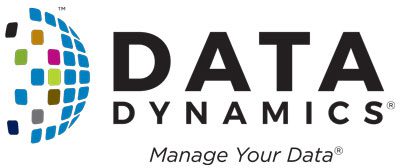Highlights:
- In 2023, an unprecedented surge in AI reshaped industries globally, highlighting the pivotal role of data in fueling AI algorithms. However, this transformative wave brought both advantages and disadvantages.
- As AI deepened its reliance on data, new challenges related to controversial data practices emerged, including biased datasets reinforcing societal prejudices, the threat of data poisoning, and privacy concerns.
- In response to these challenges, one concept that evolved beyond its traditional definition is Data Resiliency. No more constrained to mere endurance of disruptions, it has become a holistic and dynamic strategy for enterprises, allowing them to proactively adapt and ensure continuous data availability, protection, governance, and integrity.
- New-age Data Resiliency requires a strategic data management approach with an emphasis on data security, compliance, ownership, and control.
- In a strategic collaboration, Data Dynamics and Hitachi Vantara have joined forces to assist enterprises in addressing the complexities of data management in this rapidly changing environment and build a robust, data-resilient infrastructure that’s future ready.
In this Blog:
2023 was the year of unparalleled technological evolution, where the widespread influence of Artificial Intelligence (AI) sparked a transformative wave across industries and societies on a global scale. The remarkable growth of AI serves as a clear indicator of its potential to reshape our lives, redefine our work, and reshape the way we engage with the world around us. At the core of this revolution lies the lifeblood of AI: data. By 2025, experts estimate that the global datasphere will reach a staggering 175 zettabytes, underscoring the immense volume of information fueling AI algorithms. However, as AI’s reliance on data deepens, so do the challenges surrounding data integrity and ethical considerations. Issues ranging from biased datasets reinforcing societal prejudices to the sophisticated threat of data poisoning have taken center stage. Revelations about biased facial recognition systems and controversies surrounding data scraping practices, such as those of Clearview AI, serve as stark reminders of the ethical tightrope organizations walk in the pursuit of technological progress. One critical focal point in this AI-driven landscape is the transformation of Data Resiliency. No longer limited to mere endurance of disruptions, Data Resiliency in the current AI era embodies a holistic and dynamic capacity of systems and organizations. It goes beyond withstanding and recovering from disruptions; it proactively adapts and evolves to ensure the continuous availability, protection, governance, and integrity of data.
This blog delves into the core of these challenges, exploring the ethical implications of data misuse and the evolving responsibility organizations bear when handling vast amounts of personal data. Additionally, it unveils a six-tiered approach to enhancing data resiliency in the era of AI, providing practical insights and strategies to address the intricacies of data management, security, and governance. The blog also sheds light on the recent partnership between Data Dynamics and Hitachi Vantara, presenting a comprehensive solution to tackle the complexities of data management in a rapidly changing environment. It explores their nuanced capabilities aimed at building a resilient data infrastructure, empowering organizations to extract maximum insights from their data while adhering to the highest standards of security, governance, and ethical use.
Data Integrity and Ethical Dilemmas in the Age of AI
As AI’s reliance on data deepens, so does the imperative to fortify against potential malicious intrusions. Yet, amid this technological surge, organizations find themselves entangled in a web of challenges related to data integrity and ethical use. One prominent challenge revolves around the persistent issue of biased data, perpetuating and amplifying societal prejudices that, in turn, lead to skewed outcomes. Shockingly, a study conducted by MIT revealed that facial recognition systems displayed error rates of up to 34.7% for darker-skinned women, shedding light on the bias embedded in the datasets used for training.
Beyond bias, the specter of data poisoning looms large, where malicious actors strategically inject misleading or corrupted data into AI systems. Data poisoning, especially through adversarial attacks, is a sophisticated tactic for manipulating AI systems by subtly corrupting the data they learn from. In the case of image recognition models, attackers exploit the vulnerabilities inherent in how AI interprets visual data. Through imperceptible alterations—often minuscule changes in pixel values—they craft “adversarial examples,” seemingly normal images deliberately tweaked to deceive AI algorithms.
These manipulations exploit the intricacies of how AI interprets and learns from data. For instance, an image of a stop sign might be altered in a way imperceptible to human eyes but enough to mislead an AI-powered autonomous vehicle into perceiving it as a speed limit sign. This subtle but deliberate manipulation poses significant risks, potentially leading to catastrophic consequences if autonomous vehicles or security systems rely on such compromised AI algorithms.
The concerning aspect is that these adversarial attacks aren’t restricted to image recognition; they can be applied across various AI applications. For instance, in natural language processing, slight alterations in text could lead AI language models to generate misleading or harmful content. The gravity of data poisoning in AI extends beyond mere misclassification. It questions the reliability and trustworthiness of AI systems, particularly in critical domains where AI-driven decisions hold substantial impact, like healthcare, finance, and security.
Furthermore, the rampant collection of personal data for AI training purposes raises profound privacy concerns. In 2023, Clearview AI, a facial recognition company, faced an onslaught of criticism for its controversial practices. The company scraped billions of images from various corners of the internet, including social media platforms, to power its facial recognition AI. The problem? This massive collection was done without asking for permission or oversight. Think about it: your pictures from social media are part of an AI system without your say. It sparked major concerns about privacy invasion and raised fears of potential misuse by governments or shady players.
What made this situation worse was Clearview AI’s lack of transparency. They kept mum about how they collected data, how they were using it, and what it meant for the people whose images were swept up in this massive database. It felt like a big ethical no-no. This whole ordeal reignited debates about data scraping, the need for consent when it comes to our personal info, and how companies handling our data should be held accountable. It’s not just about privacy; it’s about ethics in an AI-driven world.
The Clearview AI debacle served as a wake-up call, showing why we need solid rules to govern how companies collect and use our data for training AI. Without clear guidelines, we’re walking blindfolded into a future where our privacy could be a thing of the past. It’s high time we had serious conversations about the responsible and ethical use of data-driven tech.
The ethical implications of such data misuse extend far beyond a single scandal; they delve into the very fabric of digital ethics and the responsibility of organizations handling vast amounts of personal data. As AI continues to evolve and rely on data, the need for ethical guidelines to safeguard user privacy, prevent data exploitation, and ensure responsible data usage becomes increasingly imperative. Balancing technological advancements with ethical considerations is key to fostering a digital ecosystem that respects individual privacy and upholds ethical standards in the era of data-driven technologies.
According to a report by Cisco, nearly 84% of organizations experienced a data breach due to the exploitation of third-party vulnerabilities, emphasizing the pressing need for stringent data protection measures.
Navigating the intricate landscape of unreliable data demands a multi-faceted approach. It necessitates not only technological advancements in data verification and authentication but also a concerted effort to instill ethical practices and regulatory frameworks. Organizations must proactively address these challenges to ensure the integrity, security, and ethical use of data in the realm of AI. Failure to do so risks not only financial repercussions but also erodes trust and poses significant threats to society’s well-being in an increasingly data-driven world.
Enter Data Resiliency, a pivotal shield against such perils. Data Resiliency in today’s AI era is the holistic and dynamic capacity of a system or organization to not only withstand and recover from disruptions, but also to proactively adapt and evolve in the face of evolving challenges to ensure the continuous availability, protection, governance, and integrity of data.
A Six-Tiered Approach to Enhance Data Resiliency in the Era of AI
In the fast-paced world of tech advancements, the way we think about data resilience is going through a major makeover, all thanks to the rise of artificial intelligence (AI). It’s not just about the traditional focus on recovery anymore – now, data resilience is about being foresight, preemptive planning and dynamic adaptability. Continuous availability means we can’t just fix things after they break; we’ve got to make sure everything stays up and running for those split-second decisions. Protection strategies have elevated to a new level, addressing not only conventional threats but also the nuanced risks associated with the growing complexity of AI datasets. And remember how governance used to be just a box to tick? Now, it’s the glue holding together ethical AI practices, requiring transparent policies that align with the ever-changing regulatory landscapes. Meanwhile, the integrity of data plays a pivotal role, given AI is only as good as the info it’s working with. This shift in how we handle data resilience is a direct response to making AI a seamless part of what we do. It’s not just about withstanding disruptions; it’s about using AI to its full potential while making sure our data stays available, protected, governed well, and rock-solid in its accuracy. Here are six things to keep in mind:
- Data Integrity Excellence: Orchestrating Precision: Achieving data integrity excellence requires a holistic approach, leveraging advanced techniques such as Content Analytics driven by Data Science Engines, AI/ML, and NLP capabilities. This empowers organizations to meticulously categorize data based on sensitivity, business value, and consumer information. Complementing this, Context Analytics delves deeper into unstructured data using machine learning, analyzing content, structure, and relationships to enrich decision-making processes. Cap off the process with Data Quality Management, identifying and rectifying inconsistencies, missing values, and inaccuracies to elevate overall data reliability.
- Data Accessibility Optimization: Strategically Empowering Users: Effective data accessibility optimization involves policy-based strategies. Manage file permissions strategically to facilitate functions such as preserving, re-permissioning, and security reassignments. Utilize Open Share Reporting to swiftly identify sensitive data within open shares, enabling prompt rectification of permissions. The result is a secure and controlled data accessibility framework aligned with organizational objectives. Implementing a dynamic policy framework that adapts to organizational changes and evolving compliance requirements is a best practice, fostering agility in data access management.
- Holistic Data Security Strategies: Layers of Defense: Building a robust defense against data threats involves generating actionable insights through multi-level logical expressions and operators. This facilitates a profound comprehension of risk exposure, employing descriptive and diagnostic analytics for a comprehensive risk assessment. Implement a quarantine mechanism for high-risk sensitive data within secure storage to significantly bolster data security measures. Enable secure data sharing in data lakes and pipelines, fortified by stringent access controls, ensuring the maintenance of data confidentiality and compliance with privacy regulations. Regular security audits and simulations are best practices to proactively identify and rectify potential vulnerabilities.
- Strategic Data Governance Framework: Building Trust through Compliance: Data governance forms the cornerstone of a trustworthy data environment. Conduct scans to identify files containing personal data, creating a comprehensive inventory that spans processed, collected, stored, and shared data. Leverage industry-standard compliance and governance templates to classify data according to regulatory guidelines, ensuring adherence to established standards and regulatory requirements. Utilize blockchain technology to create immutable audit logs for data access activities, supporting compliance efforts effectively. Fostering a culture of data governance awareness among employees through training and communication initiatives is a best practice, creating a sense of collective responsibility for data stewardship.
- Facilitating Consent Management: Ensuring Transparency and Control: In the landscape of data governance, facilitating consent management is paramount. Validate the presence of proper consents for personal data processing to uphold regulatory compliance and instill transparency in data handling practices. This involves implementing robust mechanisms that not only verify the existence of consents but also ensure their relevance and validity over time. Moreover, this validation process acts as a foundation for enabling security restrictions for data access across various disciplines. By aligning data access permissions with validated consents, organizations establish a dual-layered approach that not only respects individual privacy choices but also fortifies data security, creating a comprehensive framework for responsible and secure data management.
- Data Ownership and Control: Catalysts for Data Democratization: In cultivating a data-driven culture within enterprises, the principles of ownership and control emerge as pivotal catalysts. Establishing clear ownership ensures accountability and stewardship over data assets. This involves delineating responsibilities for data quality, accuracy, and security, creating a structured framework for effective data governance. Simultaneously, maintaining granular control mechanisms empowers organizations to regulate data access, usage, and sharing. These practices collectively pave the way for data democratization—an ethos where data becomes accessible and comprehensible to individuals across various departments and hierarchical levels. Promoting a culture of responsible data ownership and control breaks down silos, enabling diverse teams to leverage data for informed decision-making. This democratization enhances operational efficiency and sparks innovation as employees gain access to insights traditionally confined to specific roles or departments.
While these best practices serve as a roadmap to excellence in enterprise data management, the growing influx of data, coupled with the reality that 80% of this data is unstructured, poses a formidable challenge. Navigating this complex data landscape requires more than theoretical frameworks—it demands practical solutions tailored to the evolving needs of modern businesses.
Enter Data Dynamics, in collaboration with Hitachi Vantara. Together, they offer a comprehensive solution to tackle the intricacies of data management in a rapidly changing environment. Let’s explore how.
Data Dynamics and Hitachi Vantara Partnership — Building a Resilient Data Infrastructure for Tomorrow’s Challenges
In a collaborative effort, Hitachi Vantara and Data Dynamics are uniting their strengths to deliver data resiliency solutions, empowering organizations to fortify, oversee, and guarantee the availability of their invaluable data assets.
The core of this strategic partnership encapsulates a common vision: to provide organizations with comprehensive data management solutions for ultimate data visibility and control, allowing organizations to extract maximum insights from their data while upholding the highest standards of data security and governance. The synergy between Hitachi Vantara’s robust storage solutions and Data Dynamics’ AI/ML-driven platform has given rise to a comprehensive suite. This suite is designed to combat data sprawl, mitigate risks, and enable organizations to effectively manage, protect, and gain insights from their unstructured data. All of this is achieved while maintaining compliance and reducing costs. The power of AI and machine learning is harnessed to discover unstructured data, providing valuable insights for utilization, optimization, sensitive data categorization, and remediation.
Central to this collaboration is Data Dynamics’ cutting-edge unified data management platform, fueled by state-of-the-art AI/ML technologies. This platform not only unlocks intricate insights into unstructured data but also enhances data security, ensures compliance, and optimizes storage. A standout feature is the metadata and content analytics capability, driven by a robust data science engine, significantly improving the discovery and classification of sensitive data. What sets this collaboration apart is its consultative and strategic approach, crafting bespoke data management solutions tailored to the unique needs of each company. The process involves meticulous analysis of stored data, generating metadata insights for risk assessment, compliance assurance, and security, and ultimately transitioning data into a well-managed, secure, and efficient state.
This partnership seamlessly integrates with Hitachi Vantara’s existing suite of storage solutions, championing a collaborative approach to meet customer needs. The focus is on creating a balanced data environment that not only curtails costs and mitigates risks but also enhances data utilization, all while ensuring compatibility with existing IT infrastructure. Beyond optimizing storage infrastructure, the collaboration directly addresses executives’ concerns regarding corporate data risk exposure. By offering insights into data discovery, cataloging, and classification, the partnership tackles critical issues of data compliance, security, and protection. Through the prowess of AI and ML analytics, this collaboration emerges as a catalyst for enterprises grappling with data overload, empowering them to metamorphose data challenges into strategic advantages in an era dominated by data-driven decisions.
For further information, click here or reach out to us via email at solutions@datdyn.com or call us at (713)-491-4298. Additionally, you can schedule a meeting with one of our executives to explore the details of the partnership and discover how it can benefit your enterprise. Set up a meeting by clicking here.






